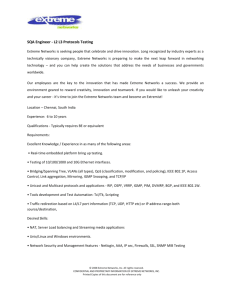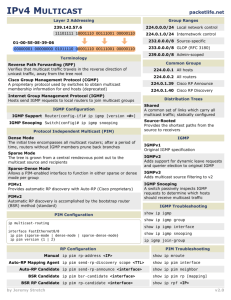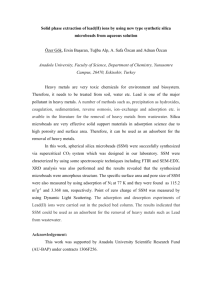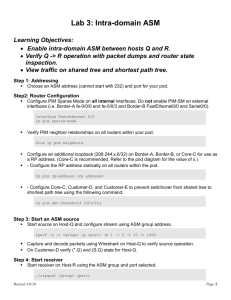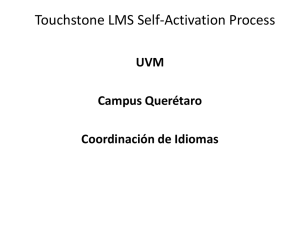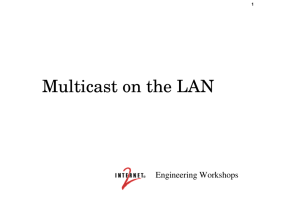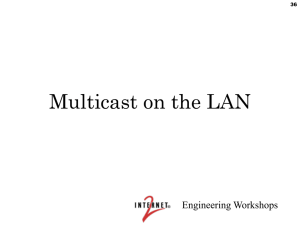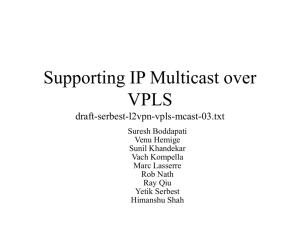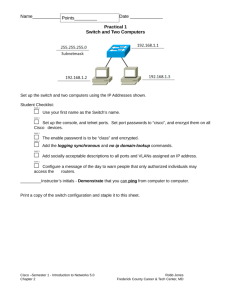Lab 2: Intra
advertisement
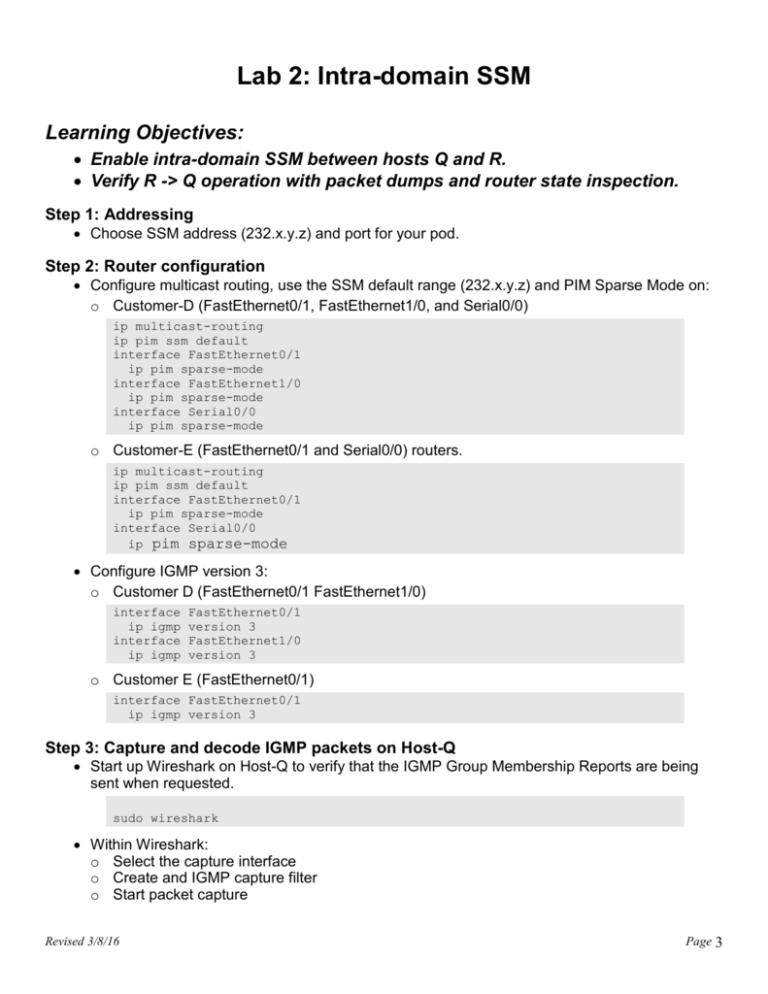
Lab 2: Intra-domain SSM Learning Objectives: Enable intra-domain SSM between hosts Q and R. Verify R -> Q operation with packet dumps and router state inspection. Step 1: Addressing Choose SSM address (232.x.y.z) and port for your pod. Step 2: Router configuration Configure multicast routing, use the SSM default range (232.x.y.z) and PIM Sparse Mode on: o Customer-D (FastEthernet0/1, FastEthernet1/0, and Serial0/0) ip multicast-routing ip pim ssm default interface FastEthernet0/1 ip pim sparse-mode interface FastEthernet1/0 ip pim sparse-mode interface Serial0/0 ip pim sparse-mode o Customer-E (FastEthernet0/1 and Serial0/0) routers. ip multicast-routing ip pim ssm default interface FastEthernet0/1 ip pim sparse-mode interface Serial0/0 ip pim sparse-mode Configure IGMP version 3: o Customer D (FastEthernet0/1 FastEthernet1/0) interface ip igmp interface ip igmp FastEthernet0/1 version 3 FastEthernet1/0 version 3 o Customer E (FastEthernet0/1) interface FastEthernet0/1 ip igmp version 3 Step 3: Capture and decode IGMP packets on Host-Q Start up Wireshark on Host-Q to verify that the IGMP Group Membership Reports are being sent when requested. sudo wireshark Within Wireshark: o Select the capture interface o Create and IGMP capture filter o Start packet capture Revised 3/8/16 Page 3 Launch SSM receiver program on Host-Q, requesting traffic from Host-R on a given group. (This will cause Host-Q to generate IGMP Group Membership Reports) ./rtpqual <source>@<group> <port> Step 4: Verify IGMP operation on the router On Customer-D, verify that the IGMP Group Membership is being seen on the client interface(s). show ip igmp groups On Customer-D and Customer-E verify RPF interface for Host-R. show ip rpf <host-r address> On Customer-D, verify that the (S,G) state exists and has correct input interface, correct output interface(s), and no incrementing traffic counters. show ip mroute <group> show ip mroute <group> count Step 5: Start multicast source on Host-R and capture packets on Host-Q Start SSM source program on Host-R and configure stream. iperf –u -c 232.x.y.z –p <port> –b 1 –i 5 –T 10 –t 1000 Capture data stream packets on Host-R to verify that the traffic is being sourced properly. wireshark Capture -> Start -> OK On Customer-D, verify that the traffic counters are incrementing properly. show ip mroute <group> count Verify (via packet capture) that traffic stream is being received by the SSM receiver on Host-Q. o Remove the capture filter configured in step 3 o Restart the packet capture Step 6: Stop SSM source and receiver programs on Host-Q and Host-R. Revised 3/8/16 Page 4
